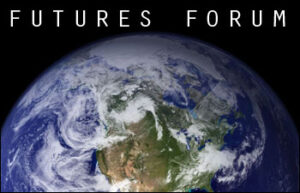Top Health Communicators and Journalists to Discuss Industry Issues and Innovation at Missouri School of Journalism Centennial and RJI Dedication Celebration
CDC, NIH Communicators and Health Journalists Participate in Interactive Discussions
Columbia, Mo. (Aug. 29, 2008) — In a world where online health information is at the public’s fingertips, issues of accuracy, ethics and responsibility in health communication and reporting are integral to planning for the industry’s future. Several of the nation’s top health communicators and journalists will tackle such issues Sept. 11-12 at the Futures Forum and Technology Summit, two keynote events of the Missouri School of Journalism’s centennial celebration and dedication of the new Donald W. Reynolds Journalism Institute.
 On Sept. 11, the Futures Forum session “Delivering Vital Health Information to the Public” will delve into the complicated roles of journalists, sources and citizens in an era of unprecedented access to health information. Discussion leaders for the session are John T. Burklow, associate director for communications and public liaison at the National Institutes of Health; Glen Nowak, chief of media relations at the Centers for Disease Control and Prevention; Susan Dentzer, editor in chief of the health policy journal Health Affairs; and Mike Stobbe, health reporter for The Associated Press. The 2 p.m. session is sponsored by the Association of Health Care Journalists and the Smith/Patterson Science Journalism Lecture Series at the Missouri School of Journalism.
On Sept. 11, the Futures Forum session “Delivering Vital Health Information to the Public” will delve into the complicated roles of journalists, sources and citizens in an era of unprecedented access to health information. Discussion leaders for the session are John T. Burklow, associate director for communications and public liaison at the National Institutes of Health; Glen Nowak, chief of media relations at the Centers for Disease Control and Prevention; Susan Dentzer, editor in chief of the health policy journal Health Affairs; and Mike Stobbe, health reporter for The Associated Press. The 2 p.m. session is sponsored by the Association of Health Care Journalists and the Smith/Patterson Science Journalism Lecture Series at the Missouri School of Journalism.
Also on Sept. 11 will be an overview of an innovative research lab at the School that can study the effectiveness of certain health-related campaigns, among other topics. The School’s PRIME Lab (Psychological Research on Information and Media Effects) has studied responses to anti-smoking and other campaigns by measuring physical reactions such as heartbeat and facial movements. The lab’s lead researchers will be on hand at 12:15 p.m. to discuss the promising future of psychophysiological research and be available after the session to answer questions and to discuss specific research needs.
On Sept. 12, two entrepreneurs at the Technology Summit will present innovations with the possibility to improve health communication. At 10 a.m., Jane Stevens, a Fellow at the Reynolds Journalism Institute, will present open-source news templates that have the potential to not only provide information, but also solve problems in the health and science communities. At 11:20 a.m., Scott Danielson will present ANNA, the code name for a technology and health care start-up that promises to build a better healthcare operating system.
Alumni, students, citizens, journalists, communicators and academics from all over the world have registered for the three-day event, which will feature the more than 35 Futures Forum sessions, 27 Technology Summit sessions, 11 exhibits and displays, four musical and theatrical performances, two evening meal events, book signings, tours and numerous networking opportunities.
About the Missouri School of Journalism and Reynolds Journalism Institute
Since publishing the student-staffed University Missourian on Sept. 14, 1908, the Missouri School of Journalism has been the international leader in hands-on journalism education, also known as the “Missouri Method.” The first to offer bachelor’s, master’s and doctoral degrees in the field, the School is also the distinguished home of several national journalism organizations, mid-career professional programs and a thriving research agenda. Its advanced curriculum takes advantage of new technologies and practices, a tradition of innovation that will be intensified with the opening of the Reynolds Journalism Institute (RJI). This 50,000 square-foot facility, created with an initial $31 million gift from the Las Vegas-based Donald W. Reynolds Foundation, will house state-of-the-art resources to test and demonstrate new technologies, experiment with convergence news production and delivery systems, and conduct real-time and virtual seminars and conferences.
Updated: April 29, 2020